Easy Rubber Egg Experiment! Yes, easy! It only takes about 5 minutes to set up and then a week’s worth of observations. Come see how easy it really is!
This post may contain affiliate links. Please read my disclosure statement for more information.
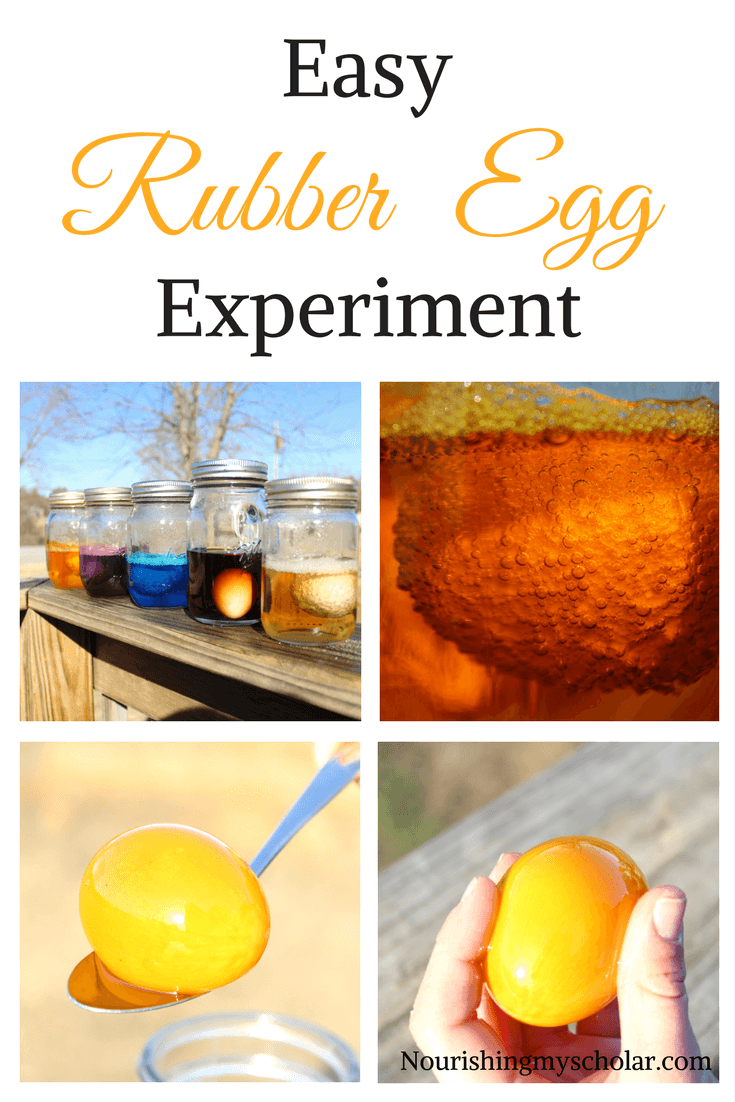
The children and I had seen a few different rubber egg experiments online and wondered if it was really all that it was “cracked” up to be…see what I did there? The basic idea is to place a raw egg in a container of vinegar. You let the egg sit in the vinegar for a week and at the end of the week, the egg is rubbery. “But why use vinegar?” the kids asked. “Can’t we use other stuff and still get rubbery eggs?” And thus our easy rubber egg experiment was born!
Easy Rubber Egg Experiment
We decided to experiment with ingredients to see if we would still get the classic rubber egg. Here’s what you’ll need….
- We gathered different solutions from our kitchen including: vinegar, Coke, corn syrup, salt water, and olive oil.
- Raw eggs (1 egg for each different solution that you use)
- Containers (we used glass mason jars because we wanted to be able to observe our eggs over the course of a week)
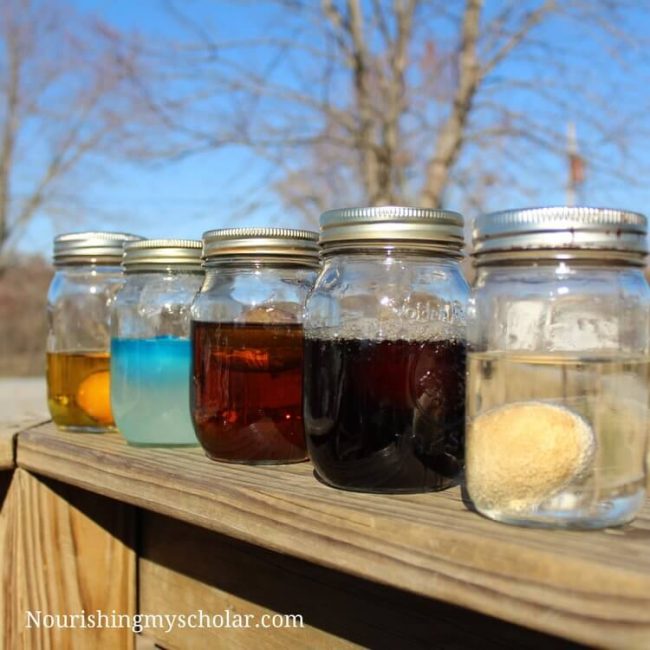
We poured enough of each solution to cover each egg and then placed the lids on the mason jars. We added a bit of blue food coloring to the salt water and orange food coloring to the olive oil so it would be easy to identify. Easy, right? Then we waited….and waited….and waited. While we waited we checked the eggs each day to see if we could observe any differences. We noticed the egg in the vinegar was always covered in bubbles.
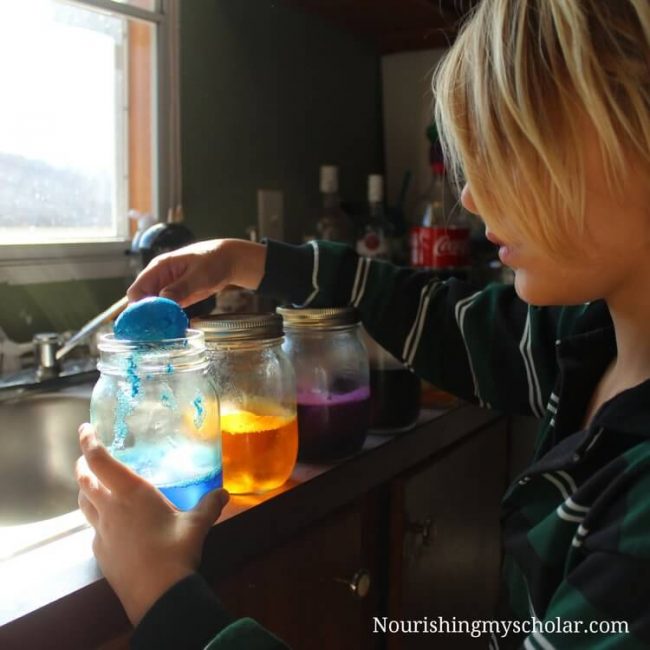
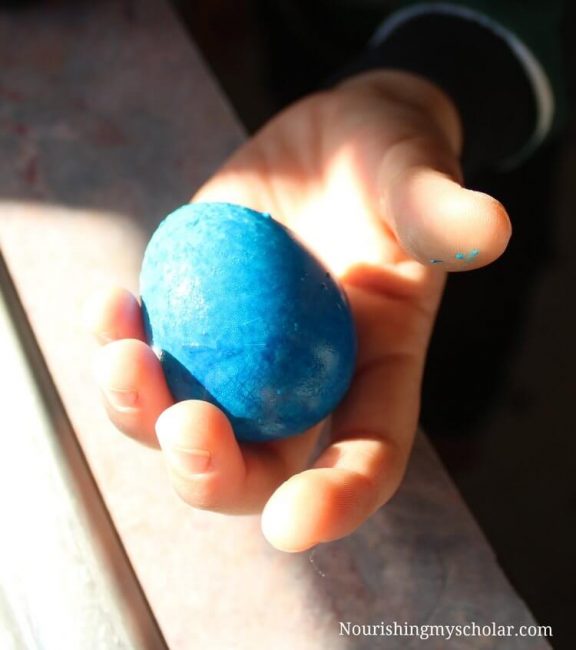
After the 7 days were up our son took each egg out of its jar.
- The vinegar egg had lost it’s shell was rubbery and also larger than when the experiment first took place.
- The corn syrup egg was developing a rubbery texture too but seemed slightly smaller than when the experiment took place.
- The Coke egg still had its shell and had only been dyed a brownish color. No other change was noticed.
- The salt water egg had its shell and had been turned a bluish color.
- The olive oil egg still had its shell.
What We Learned from the Easy Rubber Egg Experiment
An egg shell is made of calcium carbonate. The vinegar is an acid. So when you place the egg in vinegar you see bubbles forming because the vinegar is breaking down the shell of the egg. The egg became larger because the breakdown of the shell allowed the vinegar to enter the egg itself and expanded it.
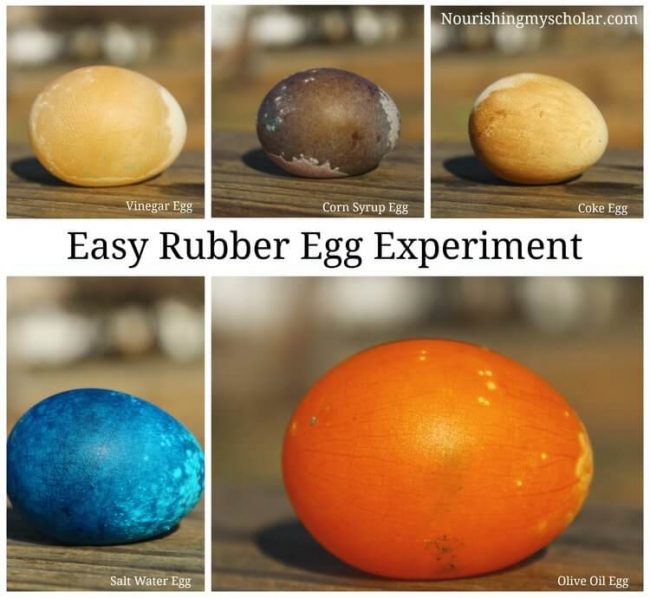
The children then decided to put all of the eggs back in vinegar only for a few more days to see what would happen….
- The vinegar egg remained the same rubbery egg.
- The corn syrup egg was even smaller than when the experiment first took place and it looked like a prune!
- The Coke egg became rubbery.
- The salt water egg became rubbery.
- The olive oil egg became rubbery.
What we learned from the Easy Rubber Egg Experiment (Phase 2)
We learned that eggs shrink in corn syrup due to osmosis! Osmosis is the process by which water moves in or out of a cell through the cell’s membrane. During osmosis, water moves from an area of higher concentration to an area of lower concentration. Corn syrup has the opposite effect as the vinegar because there is comparatively more water inside the egg than in the corn syrup. Instead of the egg swelling with both its own water and the vinegar which enlarged it, the corn syrup pulled the water out of the egg and into the syrup!
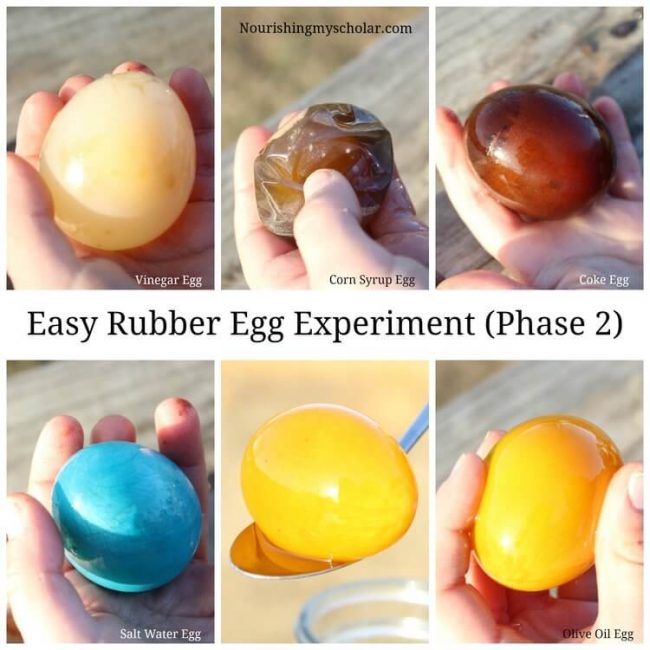
After learning so much cool stuff about rubber eggs, it was time to splat them….I mean bounce them! Seriously though, see how much they’ll bounce before they go SPLAT!
I hope you enjoyed seeing just how easy rubber egg experiments can be.
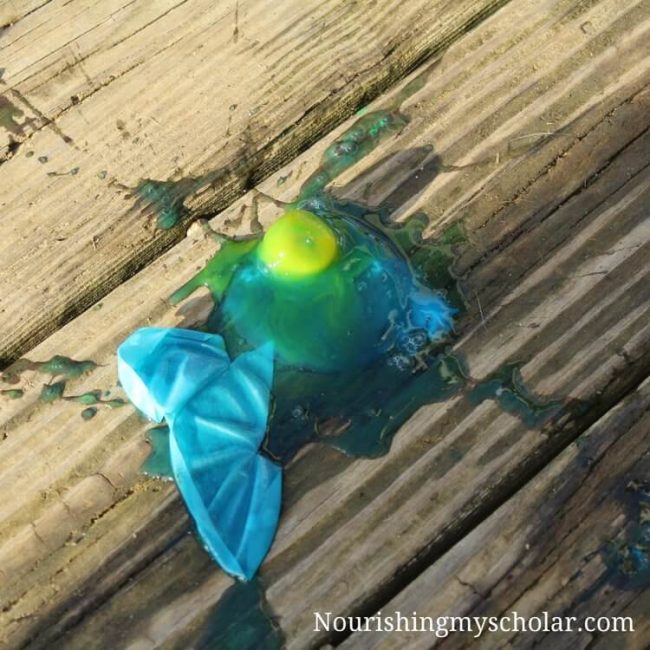
You might also like these kids books on science and experiments!
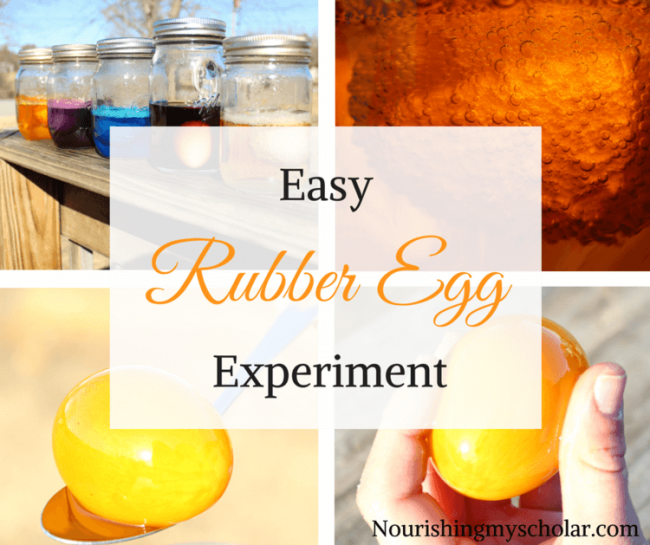




[…] Easy Rubber Egg Experiment […]